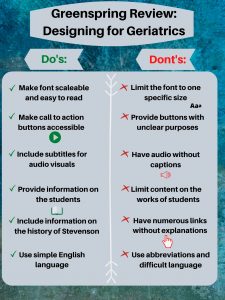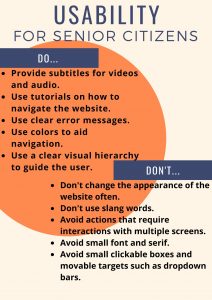Covid-19: A personal Timeline
January 11th, 2020,
I have seen on the news something about a virus in China. I don’t care. It’s probably sensational journalism to get more “clicks.” One or two people have died but these people had underlying health issues I am sure. In a few days, it will all be forgotten.
January 30th, 2020,
I read today on Reddit that the WHO declared the virus a global health emergency. An exaggeration. They’re just trying to be safe. Some are saying this is going to be really bad, but I don’t believe it. They just want to be fearmongers. Bad things only happen to other people, not me.
February 26th, 2020,
They quarantined a ship in Japan. Again, my naïve mind believes this is just another fad. Little did I know more than 700 people on that ship would test positive for the virus.
My school sent me an email about the virus, and that they’re following the situation closely. Is it really that bad? I’m just keeping calm and carrying on with my routine. People are just scared. Wash your hands, don’t cough into your hand and don’t touch other people and you will be fine.
February 29th, 2020,
It is Saturday and I have to go to work. Working at a busy restaurant is very nice on Saturdays because I’ll leave with a lot of cash in my pocket.
It is 6:30pm and I eagerly await my first table. It has been two hours. Where is everyone? I leave my job at 7:00pm with $30 in my pockets. All in a day’s worth.
I open my car door, I sit down, close it and take a deep breath. For the first time it hit me, this is not fine. I shrug it off again because I’m young and bad things only happen to other people.
March 1st, 2020,
My trip to California has officially been cancelled. I am still optimistic that everything will go back to normal soon. We know it won’t last. People are nervous but it will all go away like everything else.
Death tolls in China are going through the roof. Health care in china isn’t the best from what I’ve read so I believe all this death is due to negligence rather than a deadly virus.
March 5th, 2020,
I have been laid-off from my job. I have worked since I was 18 and never have I ever been laid-off. I have enough money for one last tuition payment, but I won’t be able to pay my car or insurance. I’ll go back to work in a few days, and I’ll pay it all off.
March 8th, 2020,
My state is in lockdown. I can no longer leave my house unless I’m doing something essential like grocery shopping or going for a run. This is historical, I think to myself.
Today I went grocery shopping and I was afraid. Afraid of touching the cart, afraid of touching doorknobs, I’m afraid of everything because we have lost control. Everyone has face coverings and I feel like I’m in the middle of a “biological fallout.” I keep scolding my dad because he touches everything he sees. “-Stop doing it. We don’t know if we are asymptomatic” I don’t want to be responsible for someone’s death.
March 9th, 2020,
I called my Mom today. She offered to buy me a plane ticket so I can go back home and “wait it out.” “-Mom, I can’t travel right now” “-Yes, mom I’m good on money, don’t worry.” I can’t possibly make my mom give me any money after everything they spent on those leukemia treatments. Everyone is struggling. I have been washing windows and managed to make a couple hundred bucks. Should be good for another couple of weeks.
March 10th, 2020,
My stepmom and dad’s boss has requested that our family move into her house to minimize risk of infection. Selfish. We have no choice. We either do it or risk losing our only two sources of income. I pack very little clothes, and my laptop. We won’t be there for long.
This virus is slowly taking away all good things from my life. I am away from my girlfriend, my bed, my home.
Most of the time, I don’t know what day it is. Feeling like Kurt Ville;
“But it was a Monday, no, a Tuesday
No, a Wednesday, Thursday, Friday
Then Saturday came around, and I said
“Who’s this stupid clown blocking the bathroom sink?”
https://www.youtube.com/watch?v=659pppwniXA
March 11th, 2020,
I wake up and chuckle. I find it amusing that I am now in lockdown in a multimillion-dollar mansion, but I only have about 53 cents in my bank account. At least I can cry about in the sauna. These hard times are marked by irony. I am a prisoner of the virus I once called dramatic.
March 25th, 2020,
The first dreaded email comes in,
“Dear Renato,
I have not received your assignment. Hope you are doing well. Please submit soon.”
I don’t know what’s going on with me. I am having trouble developing a routine in this house. I’m working weird hours. I am afraid of opening blackboard because I know how much I have neglected my student life. I just can’t do it.
March 28th,2020,
My mom calls me. She always waits for me to call her. Something is wrong.
I cannot believe this is happening. Bad things do happen to me. He died from the virus. I wasn’t even close to him so am I so hysterical? I cannot even fly home to the funeral. Is there even a funeral?
I could feel the optimism I have so proudly carried with me throughout the years seep away.
April 10th, 2020,
I have moved again, and I am back home. I couldn’t handle it over there anymore. I am isolated but I am okay.
I just want good things to happen to me again.
https://www.youtube.com/watch?v=659pppwniXA – Ville, Kurt. “Pretty Pimpin” “b’lieve i’m goin down..”

